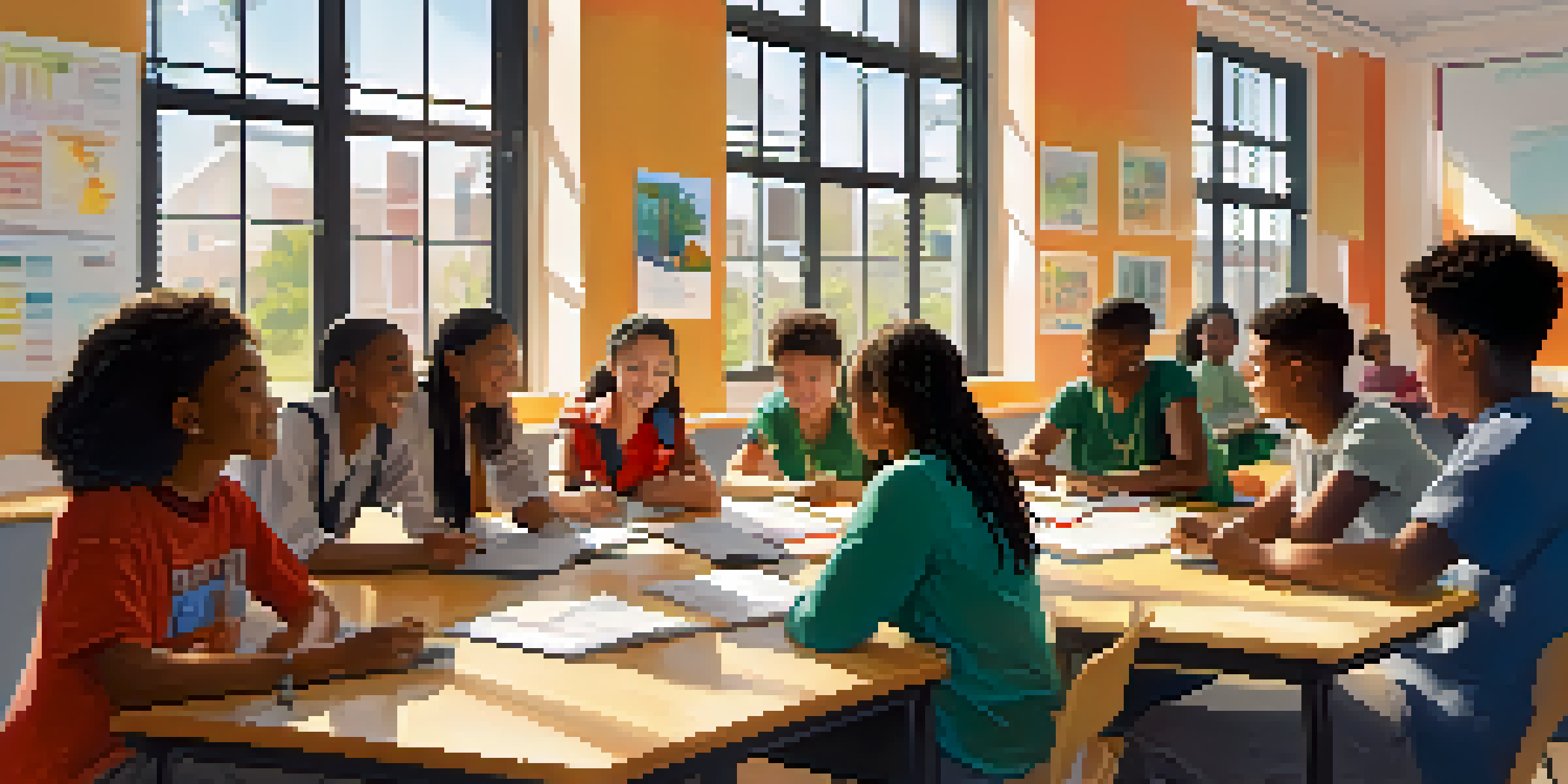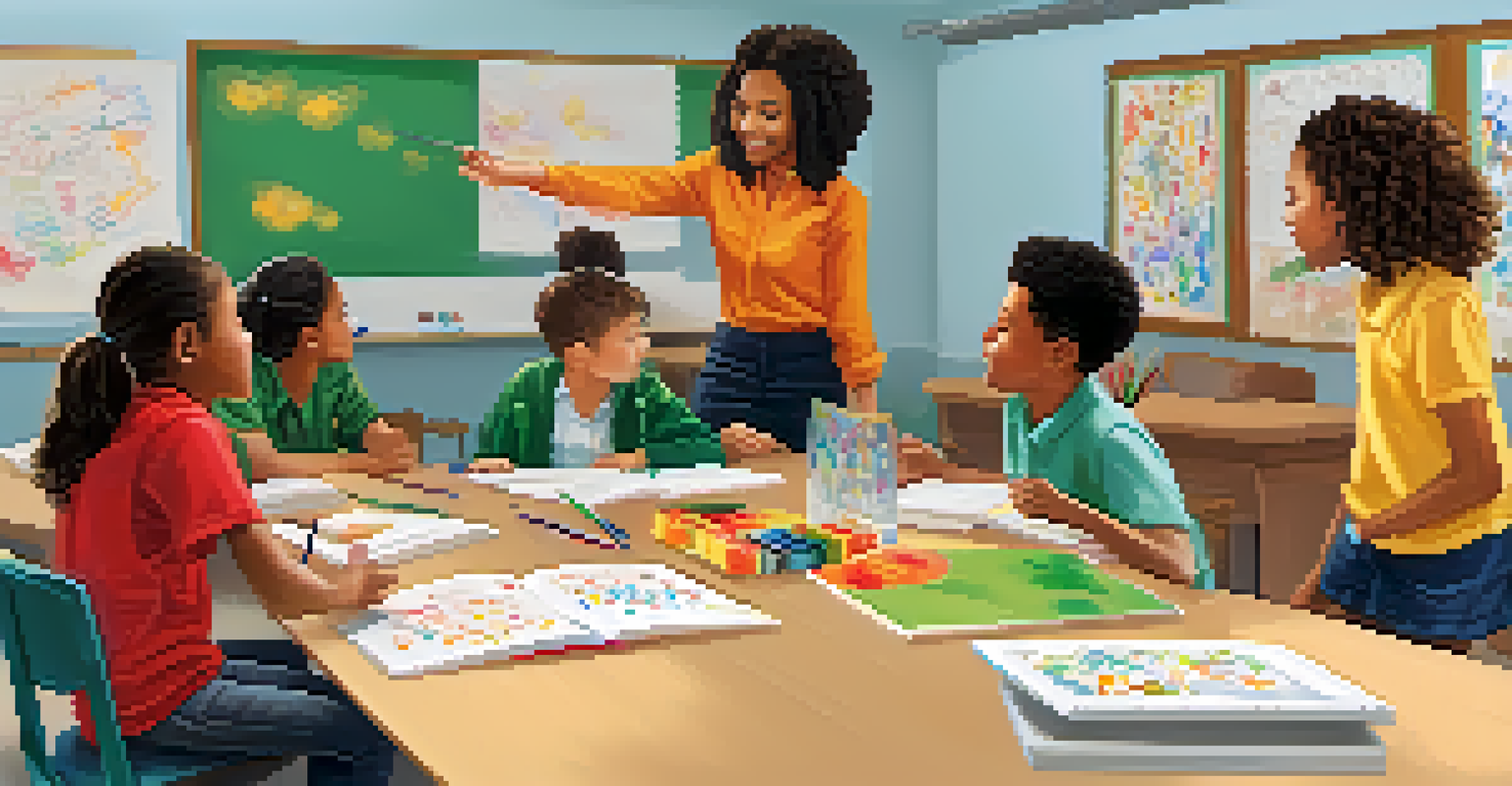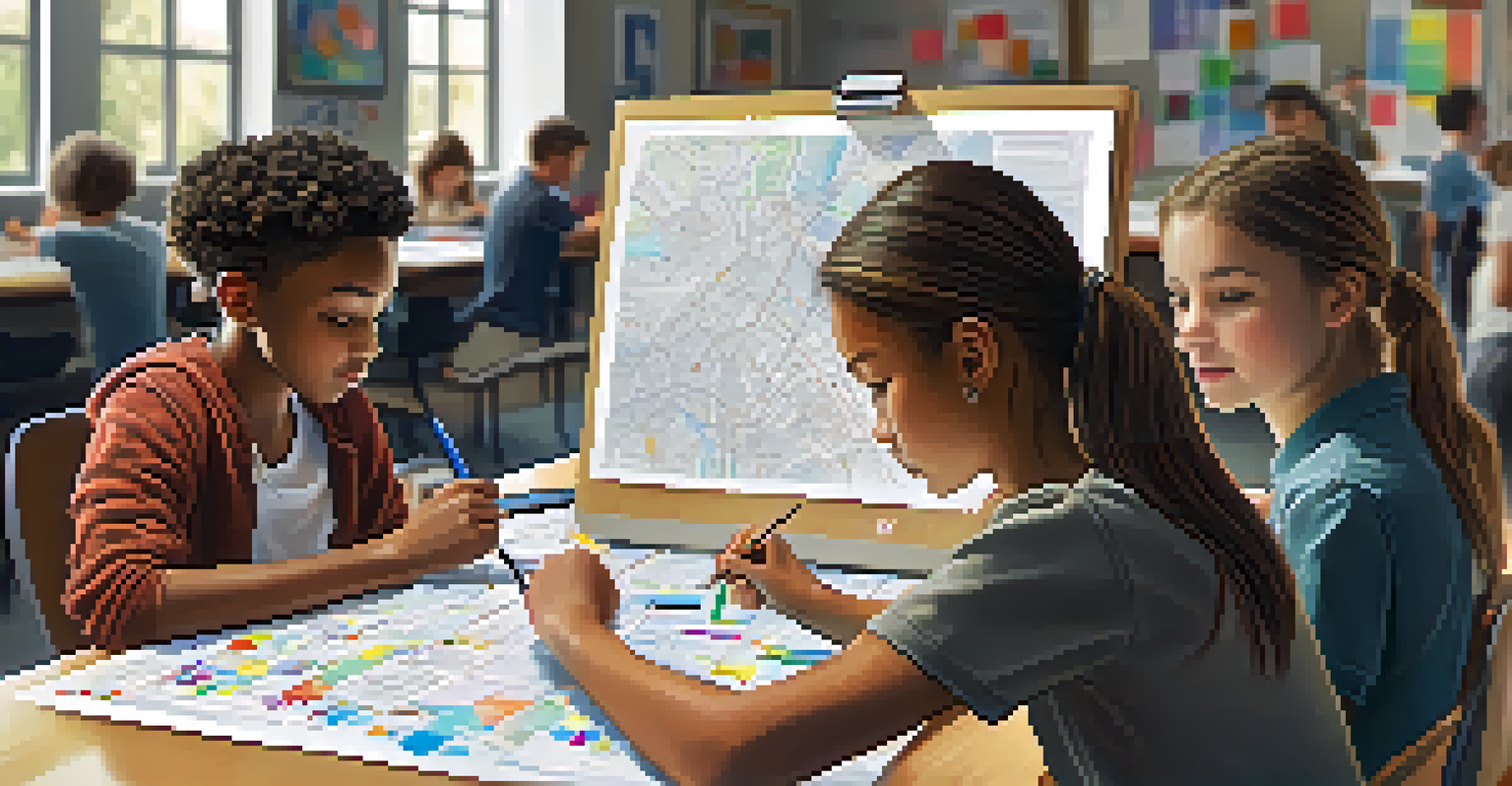Peer Learning: A Tool for Student-Centered Learning Environments

Understanding Peer Learning in Education
Peer learning is an educational approach where students learn from each other. This method encourages collaboration and communication, allowing learners to share knowledge and skills. Instead of relying solely on traditional lectures, peer learning creates a more dynamic classroom environment.
The greatest gifts you can give your children are the roots of responsibility and the wings of independence.
By engaging with peers, students often find themselves more motivated and invested in their learning. This social interaction fosters a sense of community, making it easier for students to express their thoughts and ask questions. Ultimately, this method enhances retention and understanding of the material.
Moreover, peer learning can take many forms, such as study groups, peer tutoring, or collaborative projects. Each of these formats offers unique benefits, allowing students to explore different perspectives and approaches to problem-solving.
Benefits of Peer Learning for Students
One of the most significant benefits of peer learning is the development of critical thinking skills. As students discuss and debate ideas, they learn to analyze information more deeply and articulate their thoughts clearly. This process not only enhances their understanding but also prepares them for real-world scenarios.

Additionally, peer learning nurtures essential soft skills such as teamwork and communication. Working with others helps students navigate diverse opinions and learn how to compromise. These skills are invaluable, both academically and professionally, as they contribute to effective collaboration in any setting.
Peer Learning Enhances Engagement
Students gain motivation and investment in their learning through collaboration and social interaction.
Furthermore, peer learning can boost self-esteem and confidence. When students teach their peers, they reinforce their own knowledge and feel a sense of accomplishment. This positive reinforcement creates a supportive learning environment where everyone feels valued.
Creating a Student-Centered Learning Environment
To successfully implement peer learning, educators must create a student-centered learning environment. This involves designing activities that encourage collaboration and interaction among students. By shifting the focus from teacher-led instruction to student engagement, educators empower learners to take charge of their own education.
Tell me and I forget. Teach me and I remember. Involve me and I learn.
Incorporating technology can also enhance peer learning experiences. Tools like collaborative platforms and discussion forums enable students to connect and share resources outside the classroom. This flexibility allows for continuous learning and engagement, regardless of time or location.
Moreover, providing clear guidelines and support is crucial for effective peer learning. Educators should offer resources and strategies to help students collaborate productively. This guidance helps ensure that all participants benefit from the experience.
Challenges of Peer Learning and Solutions
While peer learning offers numerous advantages, it also presents challenges. For instance, students may feel uncomfortable sharing their knowledge or may struggle to collaborate effectively. Such issues can hinder the overall learning experience if not addressed appropriately.
To mitigate these challenges, educators can implement structured peer learning activities. These activities should include clear objectives and roles, allowing students to engage with the material meaningfully. By providing a framework, educators can help students feel more confident and focused during peer interactions.
Developing Critical Skills
Peer learning fosters critical thinking, teamwork, and communication skills essential for academic and professional success.
Additionally, fostering a culture of respect and openness is essential. Encouraging students to value diverse perspectives promotes a more inclusive environment. When students feel safe to express their thoughts, peer learning becomes a more enriching experience.
The Role of Educators in Peer Learning
Educators play a pivotal role in facilitating peer learning. They are responsible for creating an environment that encourages collaboration and supporting students as they learn from each other. By actively participating in discussions and providing guidance, teachers can enhance the peer learning experience.
Moreover, educators should model collaborative behaviors themselves. When teachers demonstrate effective communication and teamwork, students are more likely to follow suit. This modeling helps establish norms for how to engage in peer learning effectively.
Finally, educators should continuously assess the effectiveness of peer learning strategies. Gathering feedback from students can provide valuable insights into what works and what needs improvement. This iterative process ensures that peer learning remains relevant and beneficial.
Examples of Peer Learning Activities
There are various peer learning activities that educators can implement to enhance collaboration. For instance, think-pair-share allows students to brainstorm ideas individually, then discuss them with a partner before sharing with the larger group. This format encourages all students to participate while fostering discussion.
Another effective activity is peer teaching, where students take turns presenting topics to their classmates. This not only reinforces the presenters' knowledge but also allows for diverse explanations that can benefit different learners. It also builds confidence in public speaking.
Educators Facilitate Peer Learning
Teachers play a crucial role in creating supportive environments and guiding students in effective peer interactions.
Group projects are also a classic example of peer learning. By working together on a shared goal, students can leverage each other's strengths and learn from their peers. This collaborative effort not only enhances understanding but also builds important social skills.
The Future of Peer Learning in Education
As education continues to evolve, peer learning will play an increasingly vital role. With the rise of technology, students have more opportunities than ever to collaborate with their peers. Online platforms and digital tools facilitate connections, making learning accessible and interactive.
Furthermore, the shift towards personalized learning highlights the need for peer learning. As students take more ownership of their educational journeys, having supportive peers becomes essential. This environment fosters a culture of mutual growth and continuous improvement.

In conclusion, peer learning is not just a trend; it's a powerful tool for enhancing student-centered learning. By embracing this approach, educators can cultivate engaged, confident, and capable learners ready to thrive in an ever-changing world.